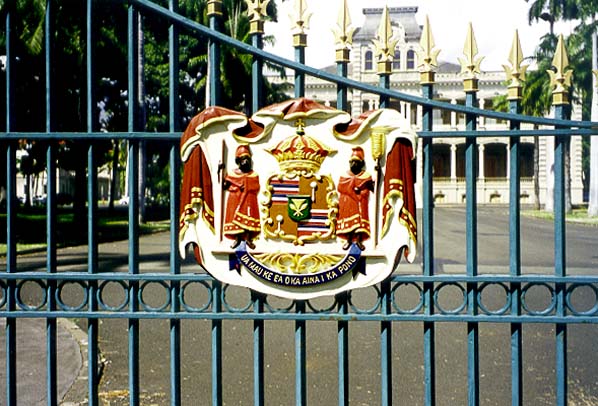La Ho‘iho‘i Ea (Restoration Day):
|
On Feb. 25, 1843, British warship commander Lord George Paulet, forcibly seized sovereignty over the Hawaiian islands from Kamehameha III. For five months the islands were a British territory. But when news of Paulet's action made it back to London, his unauthorized and brazen seizure was quickly overturned. Rear Admiral Thomas was sent to the Islands to restore Hawaiian rule. This event is the origin of the La Ho‘iho‘i Ea ("Restoration Day") celebration. At a service at Kawaiaha‘o Church in Honolulu, speeches were made both by Admiral Thomas and by the King. Admiral Thomas also made a speech outdoors, in a place now known as Thomas Square. The State Motto: It was after this service that Kamehameha III said, "Ua mau ke ea o ka ‘aina i ka pono." This phrase was translated by the missionaries as "The life of the land is perpetuated in righteousness." But it is clear that this is not the meaning of the phrase as it was understood by Hawaiians of the time. Not at all. The word "ea," which was translated as "life," also means "sovereignty." It was the sovereignty over the kingdom that had been restored. This returned the situation to a state of pono, of correctness and balance. Abraham Pi‘ianai‘a, whose grandfather was part of the foreign-educated Hawaiian elite during Kalakaua's reign, said the Hawaiians of the late 19th century understood the correct translation to be, "The sovereignty of the land has been returned, as it should be."
|
||
|
|
||
|
|||||
|
|||||

